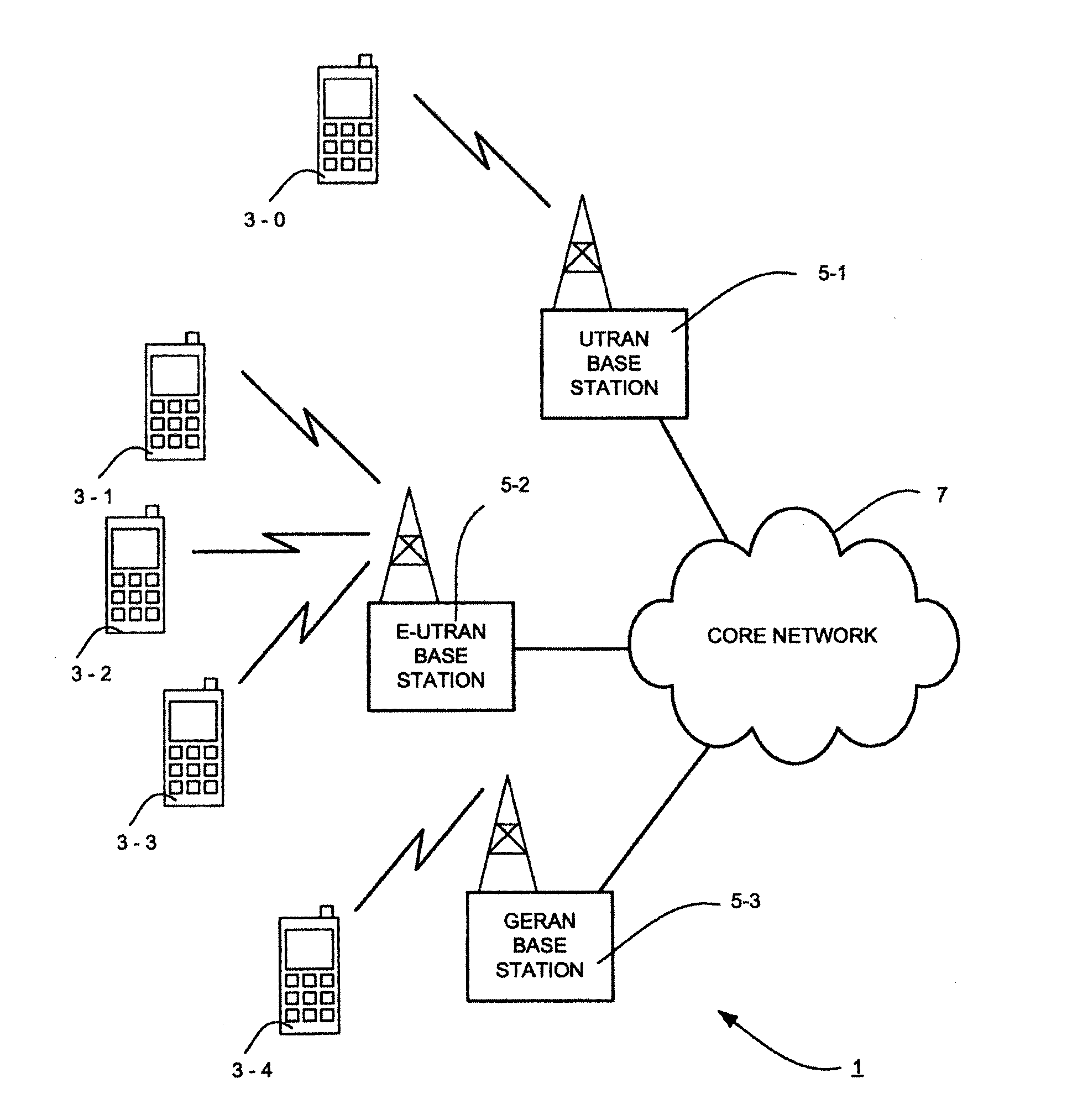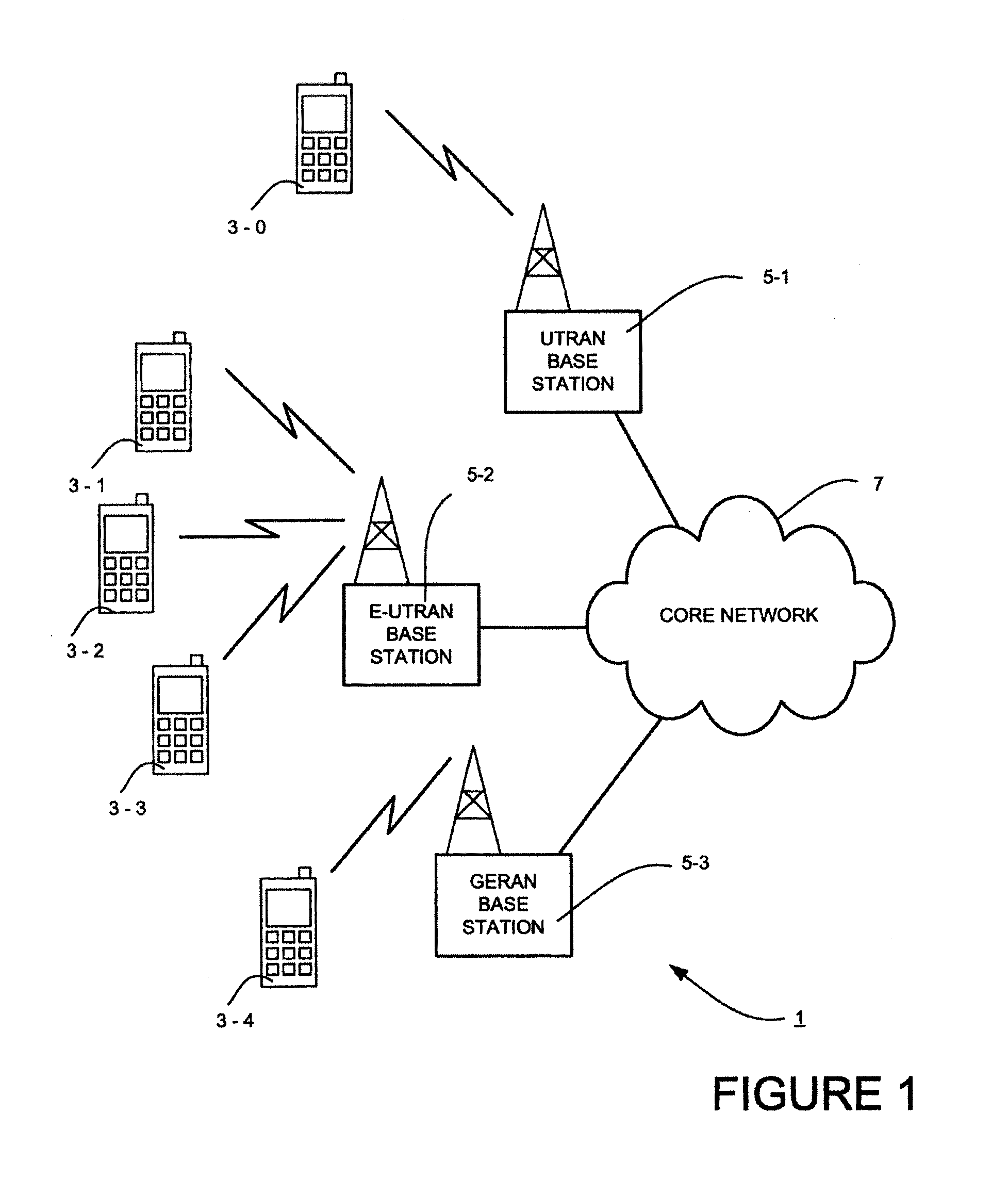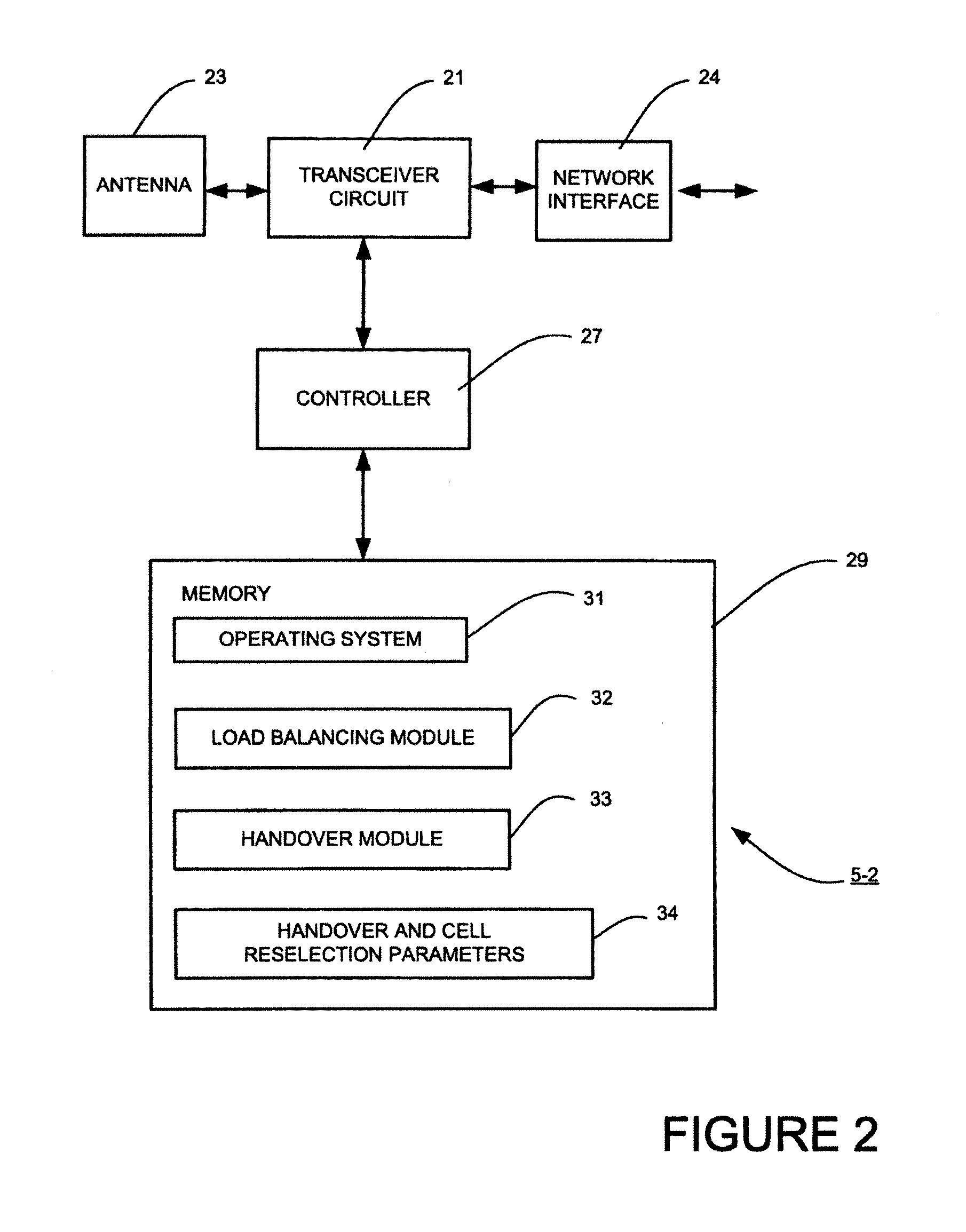Communications system
a communication system and communication technology, applied in the field of mobile telecommunication networks, can solve the problems of mobile devices being used to “ping-pong”, cell fully utilised while other cells are underutilised, etc., and achieve the effect of reducing repeated handover, reducing repeated handover, and reducing repeated handover
- Summary
- Abstract
- Description
- Claims
- Application Information
AI Technical Summary
Benefits of technology
Problems solved by technology
Method used
Image
Examples
Embodiment Construction
Overview
[0021]FIG. 1 schematically illustrates a mobile (cellular) telecommunication system 1 in which users of mobile telephones 3-0, 3-1, 3-2, 3-3 and 3-4 can communicate with other users (not shown) via one of the base stations 5-1, 5-2 or 5-3 and a telephone core network 7. In the system illustrated in FIG. 1, the base station 5-1 is a UTRAN base station and it is currently serving mobile telephone 3-0; base station 5-2 is an E-UTRAN base station and it is currently serving mobile telephones 3-1, 3-2 and 3-3; and base station 5-3 is a GERAN base station and it is currently serving mobile telephone 3-4. Each base station 5 operates a number of base station cells, each having a number of uplink and downlink communications resources (sub-carriers, time slots etc) that are available for wireless communication between the mobile telephones 3 and the corresponding base station 5. In this embodiment, it will be assumed for the sake of simplicity of explanation, that each base station 5...
PUM
| Property | Measurement | Unit |
|---|---|---|
| threshold | aaaaa | aaaaa |
| area | aaaaa | aaaaa |
| signal strength | aaaaa | aaaaa |
Abstract
Description
Claims
Application Information
 Login to View More
Login to View More - R&D
- Intellectual Property
- Life Sciences
- Materials
- Tech Scout
- Unparalleled Data Quality
- Higher Quality Content
- 60% Fewer Hallucinations
Browse by: Latest US Patents, China's latest patents, Technical Efficacy Thesaurus, Application Domain, Technology Topic, Popular Technical Reports.
© 2025 PatSnap. All rights reserved.Legal|Privacy policy|Modern Slavery Act Transparency Statement|Sitemap|About US| Contact US: help@patsnap.com



